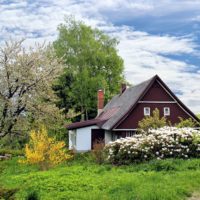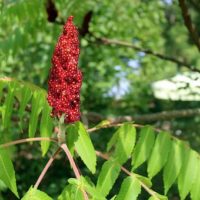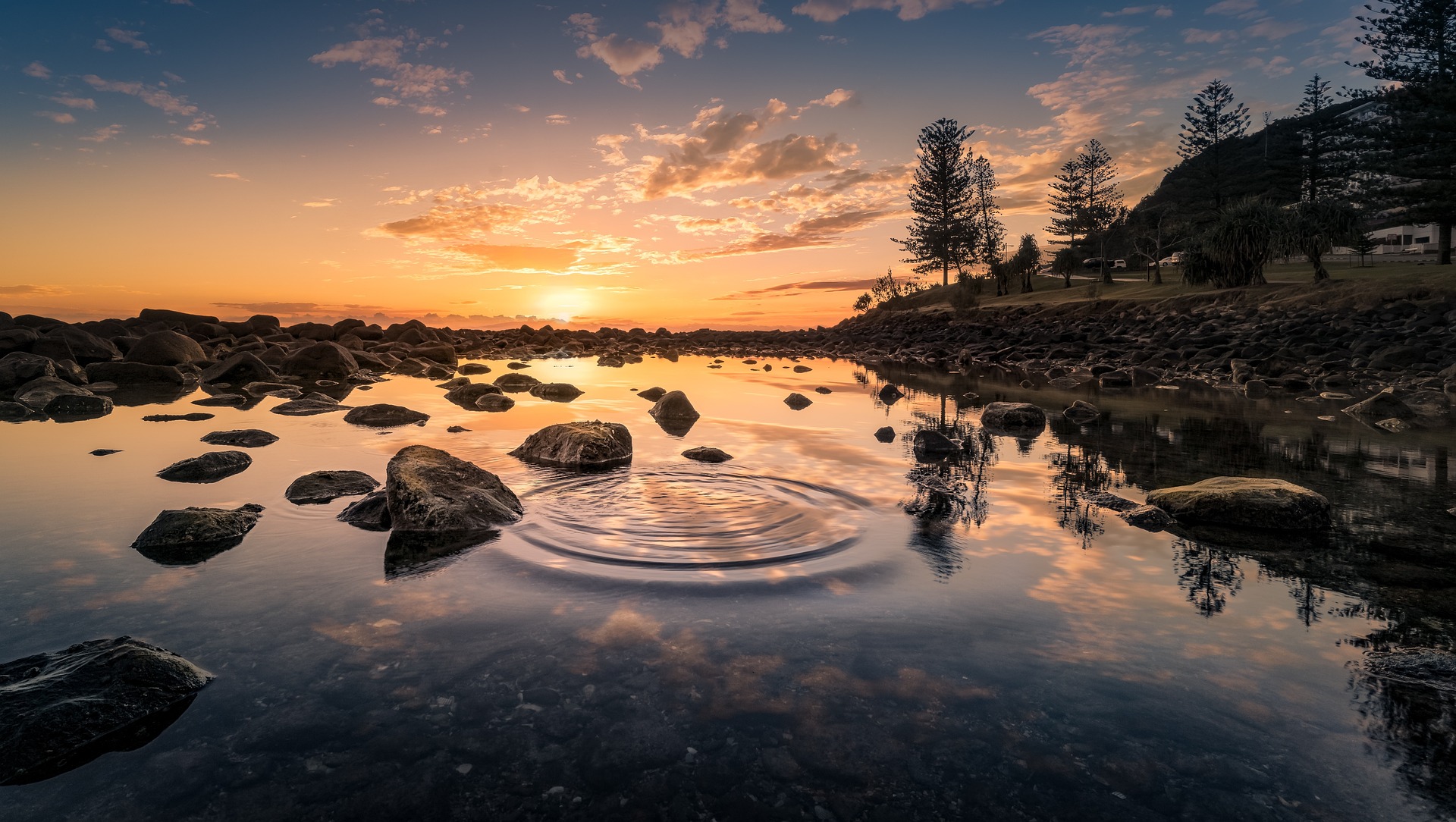Often when we think about nature, we picture forests, beaches, meadows, birds, animals…..we don’t often picture ourselves! Well yes, we are just as much part of Nature as anything you find outside and in fact every item inside your home has come from Nature as well. While it is true, our society has and is becoming further and further separated from us feeling as part of Nature, I also think that some of the things we do to become more connected to Nature is actually thickening the lines of separation – such as feeling we need to go somewhere away from our selves, homes and cities to connect with Nature.
On my journey over the past few years, I have been developing a relationship with Nature (which includes myself as part of it) and I wanted to share a few things I have done to help strengthen my connection to Nature:
Introduce Yourself and Get Out There and Meet the Plants, Animals, Insects, etc.
The first thing I like to do is start identifying plants, trees, birds, animals, etc. that I come across. I start in my yard and near my home and just maybe one or two new things each time. It’s a slow process that can take a few years but after just a season you will notice a difference. I am not only learning about what is around me, I am also introducing myself and allowing the plants, birds, etc. to know me. For example I have a Cardinal that likes to chirp at me for food because he sees me fill the bird feeder and knows I’m the one to ask or I find interesting gifts such as feathers, leaves, cones, etc. found directly on my path. I used to hear birds when I would go for walks but now I hear Mourning Doves, Robins, Crows, Cardinals, etc. there is a name to the sounds, I feel like I am part of the landscape and there is a deeper connection. You can expand by sitting with plants (inside or outside) and animals. Once we establish these connections, our sight changes, the way we hear changes and we begin to become part of our outside world a little more.
Follow The Seasons
Currently most of us live the same way everyday whether it is July or December. While there are some notable differences – with air conditioning, heat, artificial lighting and more dependency on electronic devices, the bulk of our time is spent the same. Even our eating habits stay similar throughout the year. We no longer need to harvest or grow any of our own things unless we want to. Many of our seasons are noted by very commercialized holidays that do not honour or blend into the season. For example our Christmas or Holiday Season is stressful and busy for so many of us when this is the time of year for quiet nights, resting and restoring ourselves. (I am specifically speaking of the commercialization of these events, not the actual celebrating these events). Historically, our ancestors celebrated in accordance to the seasons and did things that aligned with each. Looking into your culture and ancestry and seeing how seasons were celebrated and bringing some of those practices back helps you get to know the seasons and appreciate each. We tend to think of the seasons as four separate things, but it is all one year that blends. The start of a season is usually celebrated and noted (Solstices, Equinox) which can be seen as cardinal (marking the sun has entered a new season). The mid season is celebrated as well which can be considered the fixed time of the season when we see the actual essence of the season as we know it. For example here in Southern Ontario, if I asked you what month you think of when you think of summer, most will answer July or August, seldom would someone say June and even rarer September (even though Fall doesn’t start until September 21/22). The last part of the season is the mutable part, where we are now leaving the “fixed” part of the season and we can start to feel the next season blowing in. As we spend time with these different parts of the seasons more and more we begin to feel them and see them in a different way. Noting some of the ways they may have been celebrated and making a point to do this yourself can help you not only look forward to the changing seasons but also deepen your connection with them. For example, Summer Solstice is the longest day and you could spend the longer evening fireside (outdoors) with family or friends, Winter Solstice is the shortest day and the evening could be spent in candle light with a simple stew and time spent with family and friends exchanging stories. As we move along seasonally, we should also eat with the season. Modern cooking and grocery stores have made all food available every day of the year. Having more cooling foods in the summer (cold salads, berries, fruits, raw vegetables, etc.), more warming foods on the winter menu such as soups, stews, root vegetables, etc. and during spring and fall – looking at what’s growing outside to give our body the proper nutritional cleansing it needs (Dandelions, Chickweed, Burdock, Sumac, etc.) will help us to live presently in the season we are in.
You and Your Home are Part of Nature
And third on my list is to realize that you are a special part of Nature and so is your home. For some reason we have completely separated not only ourselves but also our homes and neighbourhoods (and sometimes city’s) form nature. We often feel like we need to leave our property in order to connect with nature. Last year I had this realization when I really wanted to visit some trails during the summer but I was way too busy with my garden. At the end of the summer I felt a little disappointed I didn’t do any of these things but realized not only how much I enjoy my garden, but it’s one of my favourite places to be. As I sit in my

Make your space part of Nature
home I also think that every item comes from Nature and take a moment and appreciate it. I include house plants and allow my garden freedom to grow while I only tend what is needed rather than try and make it a specific way (we work together and I am able to learn a lot more than if I try and boss the plants around). I invite nature back into my home, I say thank-you to the land I live on for allowing me to build/have a house there (it isn’t the other way around) and I don’t think of Nature as a far off place but instead it is where I am.
I hope that you found some useful ideas and thoughts for those looking to strengthen their connections to Nature. As you get more in tune with Nature, you will notice different paths open up and opportunities come along that help you continue along and rebuild this distorted connection.
I touched briefly about Springtime and Fall plants and herbs and would like to add a few reasons/tips. We often see “seasonal allergies” most predominantly when we enter these two seasons. Nature provides a lot of plants that will help nourish our bodies and a good time to start using these plants as food or tea is during the end of the previous season (the mutable part) as you work up to the new season. Here are a few plants you may want to consider and can become your seasonal tradition:
*Spring:
Stinging Nettle – harvest the young leaves for soups and herbal teas (wear gloves to protect yourself from the sting, once the leaves are cooked or dried they loose their sting). Stinging Nettle is one of the most nutrient packed plants in North America, it is also diuretic and will help flush the body naturally.
Dandelion leaves – can be used in salads or anything you add lettuce to (sandwiches, burgers. etc.) or made into herbal tea. Dandelion leaf is rich in nutrients with a diuretic effect that helps cleanse the body naturally.
Chickweed – use in pesto, salads, sandwiches, etc. or made into herbal tea which like the above mentioned (see a pattern?) is diuretic and helps to purify the blood and support circulation.
*Fall:
Sumac – harvest the red fuzzy berry clusters from Staghorn Sumac, wash and soak overnight in a pitcher of water (store in the fridge), strain and

Staghorn Sumac clusters
add honey to taste. This makes a tart drink that is rich in vitamin C (which is one of the most helpful vitamins in regards to seasonal allergies) and its sour tastes show us it is astringent (helps to tighten up and dry up your runny nose). By making a cold infusion (not heating the water) you retain all that wonderful vitamin C.
Burdock Root and Dandelion Root – in the fall you will find the energy of the plants starts going down into their roots (just like us), it’s time to get the deeply nourishing qualities from these wild plants that reach further into the ground than anything on the grocery store shelves. We need this deep nourishment for our bodies as the colder weather approaches and we begin to allow ourselves to slow down and spend time in our root state of restoration. Just like a bear hibernates, we as well (should) spend our winter months in a state of hibernation by allowing the shorter days to give us the gift of longer, restful nights and time to go deep within ourselves as we spend more time in the quietness of the winter. Anyways these roots are highly restorative, they help cleanse the blood and the liver, working well together to help the body through any imbalances (seasonal allergies) it might experience. These roots can be cleaned, peeled and cooked/roasted as any root vegetable is or in regards to slowing down – made into a decoction. Like a tea but simmered in water on the stove for 30 minutes, strained and enjoyed.
*not intended as medical advice. Please be sure to always positively identify plants before ingesting them and check any contraindications with medications or any specific health ailments.
There are also many more plants to discover during the seasonal changes – whatever is in your yard is often what you will need (and why allowing your yard to grow is so very important). You can also check out my Herbal Shop for teas and various products that can help you out, including my Super Nettle-Mint Tea for the Spring and Restorative Roots for the Fall!
~Angie


